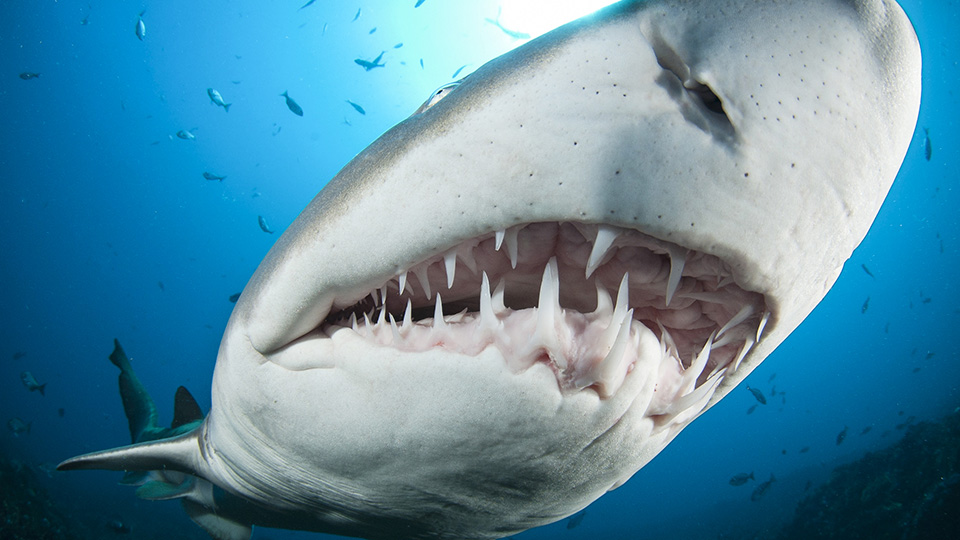Fun Shark Facts for Kids!

Although sharks have a reputation as destructive beasts that attack almost anything that enters their water habitat, the actual number of shark attacks is probably lower than you imagine.

There are many different types of sharks including the great white shark, hammerhead shark, bull shark, tiger shark and mako, they all offer varied and interesting information so read on and enjoy our cool shark facts.
- Sharks do not have a single bone in their bodies. Instead they have a skeleton made up of cartilage; the same type of tough, flexible tissue that makes up human ears and noses.
- Some sharks remain on the move for their entire lives. This forces water over their gills, delivering oxygen to the blood stream. If the shark stops moving then it will suffocate and die.
- Sharks have outstanding hearing. They can hear a fish thrashing in the water from as far as 500 meters away!
- If a shark was put into a large swimming pool, it would be able to smell a single drop of blood in the water.
- Although most species of shark are less than one metre long, there are some species such as the whale shark, which can be 14 metres long.
- A pup (baby shark) is born ready to take care of itself. The mother shark leaves the pup to fend for itself and the pup usually makes a fast get away before the mother tries to eat it!
- Not all species of shark give birth to live pups. Some species lay the egg case on the ocean floor and the pup hatches later on its own.
- Great whites are the deadliest shark in the ocean. These powerful predators can race through the water at 30 km per hour.
- Unlike other species of shark, the great white is warm-blooded. Although the great white does not keep a constant body temperature, it needs to eat a lot of meat in order to be able to regulate its temperature.
- A shark always has a row of smaller teeth developing behind its front teeth. Eventually the smaller teeth move forward, like a conveyor belt, and the front teeth fall out.
Facts from: http://www.sciencekids.co.nz/sciencefacts/animals/shark.html

NORTH SHORE SHARK ADVENTURES
Haleiwa Harbor
66-105 Haleiwa Rd
Haleiwa, HI 96712
Call 808.228.5900
